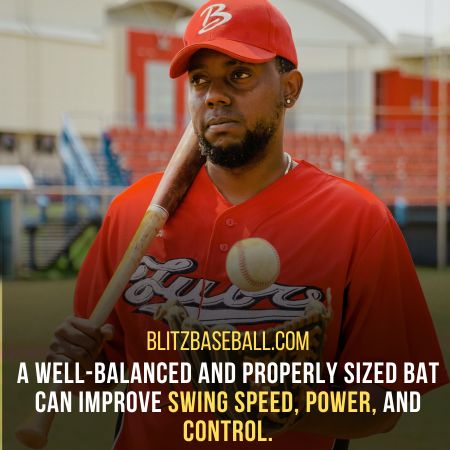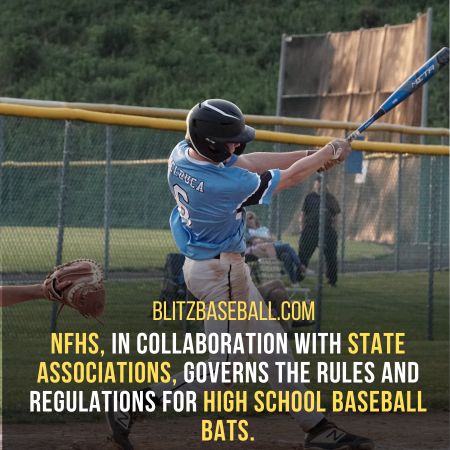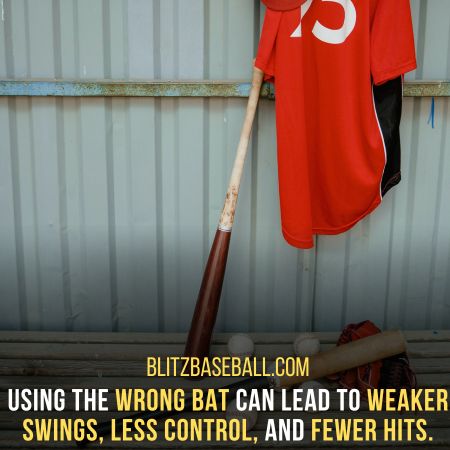In the realm of high school baseball, the use of appropriate bats is paramount to optimize swing speed, power, and control. It’s important what baseball bats are used in high school baseball. Failing to select the right bat can result in weaker swings, diminished control, and decreased hitting success.
The National Federation of State High School Associations (NFHS), in collaboration with state associations, establishes regulations governing high school baseball bats. These regulations encompass specific characteristics, length and weight restrictions, labeling and certification requirements, as well as equipment limitations.
Familiarity with these rules is crucial to avoid penalties and the potential for on-field injuries.
Key Takeaways
- A well-balanced and properly sized bat can improve swing speed, power, and control.
- Using the wrong bat can lead to weaker swings, less control, and fewer hits.
- Bats must meet the rules and performance standards of the baseball league.
- NFHS, in collaboration with state associations, governs the rules and regulations for high school baseball bats.
What Baseball Bats Are Used In High School?
Approved bat characteristics are important to consider in high school baseball, as they must meet specific guidelines regarding their assembly, condition, materials, dimensions, grip construction, and labeling.
Bats used in high school baseball must be permanently assembled or have an interchangeable barrel structure. They should be free from damage, rattles, dents, cracks, and sharp edges.
Bats made of multiple materials need to meet certain specifications. Knobs, handles, barrels, tapers, and end caps have specific restrictions. The end cap must be made of approved materials and securely fixed. Bats made of multiple wooden materials have a maximum diameter of 2 5/8 inches. The bat’s length should not exceed 36 inches. The bat’s weight is determined by a numerical value based on its length.
Grip construction should have tape or cork, not smooth plastic, and bats must have a minimum and maximum grip size.
Labels should be permanently fixed and made of silkscreen material, with a rectangular shape and a maximum size of 1 inch.

Length and Weight Restrictions
The length and weight of bats in high school baseball must adhere to specific regulations and restrictions. According to the rules set by the National Federation of State High School Associations (NFHS), the length of a bat should not exceed 36 inches. This limitation ensures that players can maintain control and swing the bat effectively.
Additionally, the weight of a bat is determined by a numerical value based on its length. This regulation prevents players from using excessively heavy bats that can hinder their performance.
By enforcing these length and weight restrictions, high school baseball ensures fair play and provides a level playing field for all athletes.
Restricting the length of bats prevents players from gaining an unfair advantage by using excessively long bats.
Limiting the weight of bats ensures that players can swing the bat with proper technique and generate sufficient bat speed.
Adhering to these regulations promotes player safety and reduces the risk of injuries caused by using bats that are too long or too heavy.
Labeling and Certification
Labeling and certification play a crucial role in ensuring that bats used in high school baseball meet the necessary performance measures and safety standards. To ensure compliance, bats must have certification labeling from authorized testing organizations. The labeling should be permanently fixed and made of silkscreen material, with a rectangular shape and a maximum size of 1 inch. It is important to note that BBCOR logo labeling is prohibited.
Additionally, bats made of multiple wooden materials must meet performance measures set by BBCOR. Tape or roughness is allowed within 18 inches of the handle for single-piece wooden bats, but no foreign substances are allowed beyond that point.

Furthermore, bats must have a maximum diameter of 2¾ inches and a length of 36 inches or less.
Equipment Restrictions
Equipment restrictions in high school baseball include limitations on the use of foreign objects and certain items during warm-up. It is important for players, coaches, and parents to be aware of these restrictions to ensure compliance with the rules and regulations set by the National Federation of State High School Associations (NFHS).
Here are three key items that are subject to equipment restrictions:
-
Only bats are allowed for use during warm-up. Weighted bats designed for warm-up purposes are permitted, but foreign objects not meant to be part of the bat are not allowed.
-
Certain items may be restricted during warm-up, such as weighted sleeves or devices that attach to the bat, as they can alter the bat’s weight or balance.
-
Players should also be cautious of using substances on their bats beyond the allowed tape or roughness within 18 inches of the handle for single-piece wooden bats. No foreign substances should be applied beyond that point.
By adhering to these equipment restrictions, players can ensure fair play and maintain a safe and level playing field in high school baseball.
Importance of Using the Right Bat
Using an appropriate bat that is well-balanced and properly sized can significantly enhance swing speed, power, and control in high school baseball. It is crucial for players to understand the importance of using the right bat to maximize their performance on the field.
A well-balanced bat allows for better weight distribution, enabling players to generate more power and control in their swings. Additionally, a properly sized bat ensures that players can maintain proper form and technique, leading to more accurate hits.
By using the right bat, players can improve their overall performance and increase their chances of success in high school baseball. It is essential for players, coaches, and parents to be aware of the rules and regulations regarding bat characteristics and ensure that they are using legal and safe equipment.

Frequently Asked Questions
Are there any restrictions on the color or design of high school baseball bats?
There are no specific restrictions on the color or design of high school baseball bats mentioned in the provided information. The focus is on the performance, safety, and adherence to rules and regulations for bat characteristics, labeling, and certification.
Can high school players use composite bats?
High school players are allowed to use composite bats in baseball. However, these bats must meet specific guidelines and regulations set by the National Federation of State High School Associations (NFHS) to ensure safety and fair play.
Is there a specific material that is recommended for bat grips?
The recommended material for bat grips in high school baseball is tape or cork, as smooth plastic is not allowed. Grips should meet the minimum and maximum size requirements set by the rules and regulations of the league or association.
Are there any restrictions on the length-to-weight ratio of high school baseball bats?
There are no specific restrictions on the length-to-weight ratio of high school baseball bats mentioned in the provided information. However, the weight of the bat is determined by a numerical value based on its length.
Are there any regulations on the use of pine tar on bats in high school baseball?
There are regulations on the use of pine tar on bats in high school baseball. According to the rules and regulations, pine tar is allowed on the bat’s handle, but it should not extend beyond 18 inches from the handle.
Conclusion
In conclusion, it is crucial for high school baseball players, coaches, and parents to be aware of the rules and regulations set by the NFHS regarding bat performance and safety.
Using the right bat can greatly enhance swing speed, power, and control, while using illegal bats can result in weaker swings, less control, and potential harm on the field.
Adhering to the specific characteristics, length, size, and weight restrictions, as well as the appropriate labeling, certification, and equipment restrictions, is essential for a successful and safe high school baseball experience.
